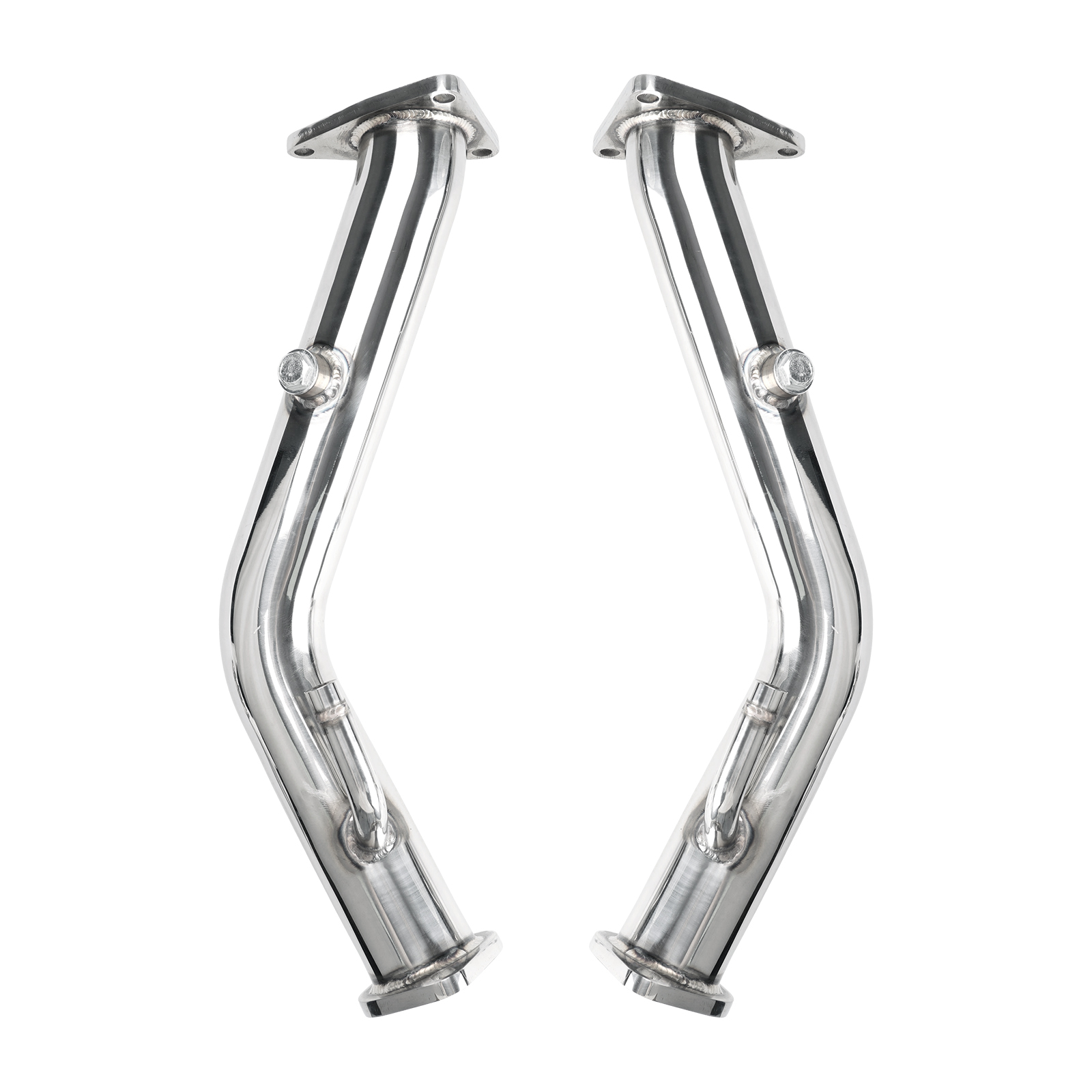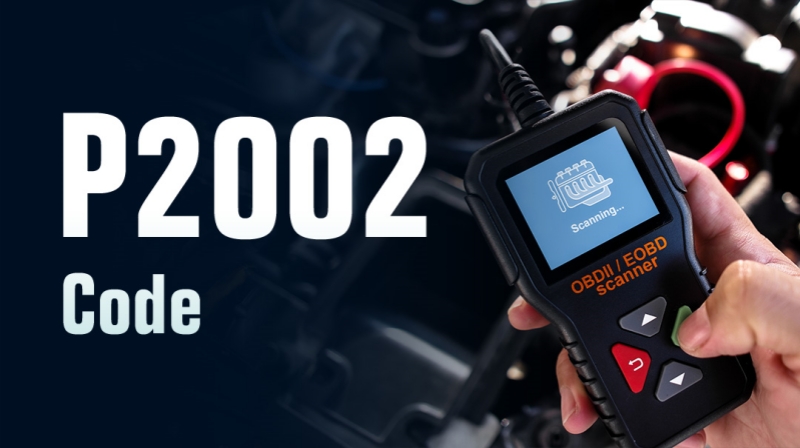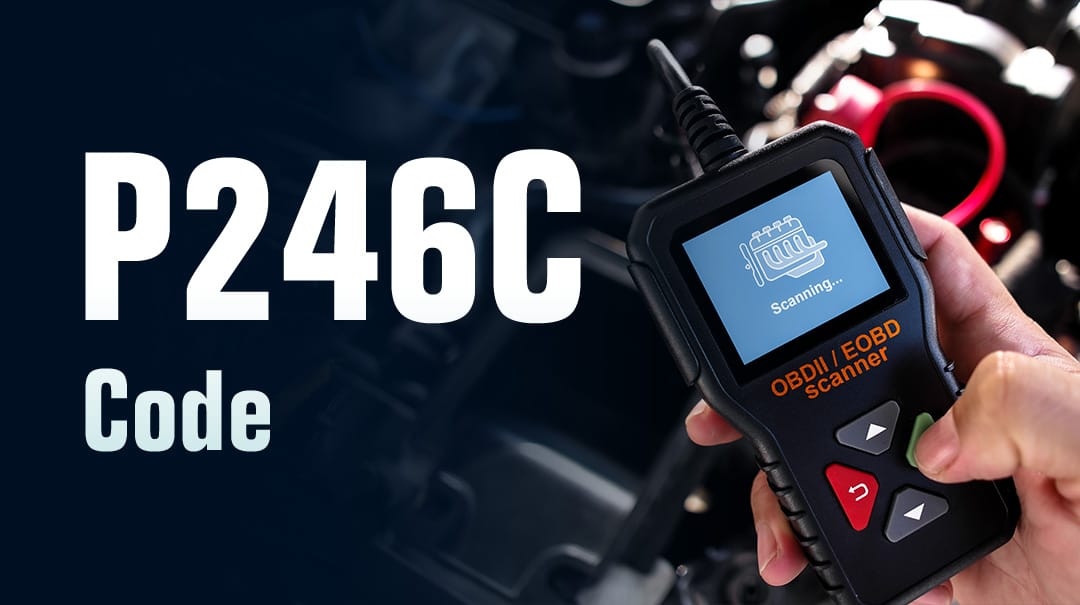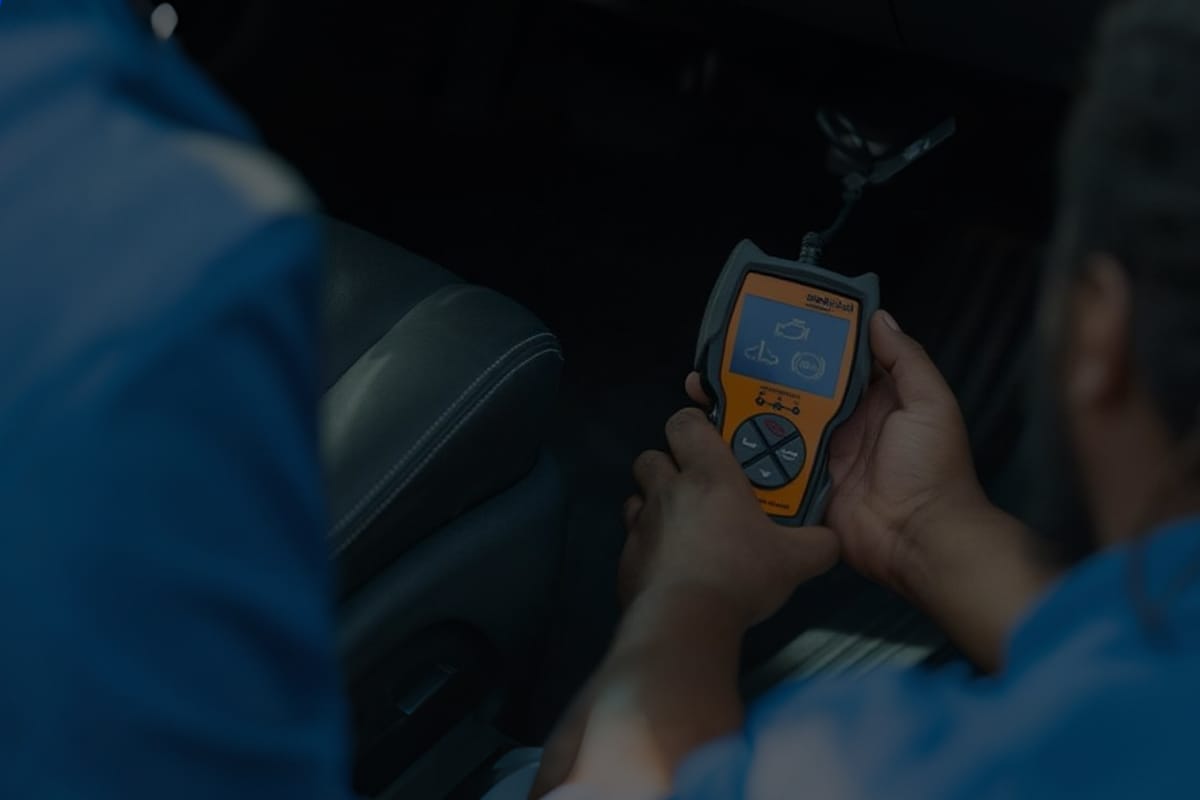You drop by your regular garage for a quick oil change - same smell of grease and coffee in the air, same old radio playing in the corner. The mechanic plugs in the scanner; nothing unusual. A minute later, he looks up and says, "Got a code here - P2454." You blink. "And that means…?"
Well, that's your Diesel Particulate Filter (DPF) pressure sensor showing a low signal. It means your truck's exhaust system isn't getting accurate pressure readings. While not immediately dangerous, ignoring it can mess with DPF regeneration. It can further reduce performance.
Take a breath. Nothing here is beyond repair.
Let's understand what the issue here is and what exactly is wrong with the trouble code P2454. While we are at it, we will also explore what it means, what's behind it, how to fix it, and how to keep it from lighting up your dashboard again.
- P2454 = DPF pressure sensor signal too low: Your ECM's flying blind.
- Common causes: Clogged hoses, bad wiring, or a faulty sensor.
- Fix: Clean or replace the sensor and hoses, check wiring, and run a regen.
- Prevent: Regular highway drives and DPF maintenance.
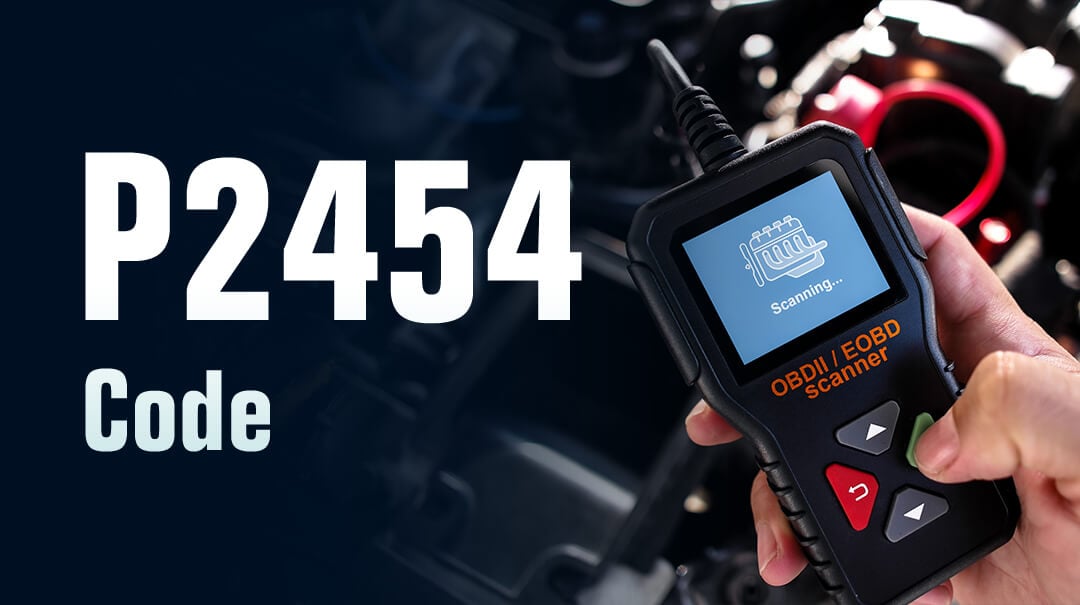
What Does Code P2454 Mean?
P2454 is an OBD-II trouble code that means "Diesel Particulate Filter Differential Pressure Sensor 'A' Circuit Low." In simple and plain words? The sensor isn't really talking to the engine the way it should be, so the computer thinks there's a problem.
Let's unravel what is going on here! Your truck's computer keeps tabs on that little sensor to check how much pressure builds inside the DPF. When the hose gets gunked up with soot, the connector rusts a bit, or the sensor just starts to give out, the voltage reading dips. That's when the Engine Control Module (ECM) throws up its hands and says, "Something's off," and logs the code P2454.
Some trucks light up the check engine right away; others wait for it to happen a couple more times before sounding the alarm. Leave it alone too long, and the DPF won't burn off soot like it should. The exhaust starts choking, and power drops. Your diesel begins to feel like it's gasping for air.
Common Symptoms of P2454
When engine code P2454 shows up, your truck may still run - but it'll definitely start showing signs that something's off.
Here's what drivers usually notice:

- Check Engine Light - the main red flag.
- Reduced power or limp mode - your truck feels sluggish or won't rev properly.
- Poor fuel economy - your ECM is trying to compensate for bad readings.
- DPF regeneration issues - regen cycles take longer or fail to start.
- Thick exhaust smoke - often darker than usual, due to excess soot.
- Rough idle or hesitation - when pressure readings confuse the ECM.
Possible Causes of P2454
Don't rush to replace your DPF right away. This code P2454 often comes down to something minor.
Here are the usual suspects:
- Faulty DPF differential pressure sensor: The most common culprit. These sensors can wear out or get gunked up with soot over time.
- Damaged or loose wiring: Corroded pins, frayed wires, or poor grounding can mess with voltage signals.
- Exhaust leak before the DPF: Leaks reduce pressure and cause false low readings.
- Moisture or soot buildup: Even a few drops of moisture can cause short circuits.
- Faulty ECM (rare): If you're seeing multiple pressure-related codes, the ECM itself might be acting up.
In most cases, the sensor or hoses are the villains' not the DPF itself.
How to Diagnose Code P2454
You don't need to be a pro mechanic to track this down. A bit of patience, a multimeter, and your scanner can go a long way.
Step 1: Confirm the Code
Scan your vehicle and note all stored codes. If OBD code P2452 or P2453 shows up, too, you're definitely looking at a DPF sensor circuit issue. After recording all fault codes, you can try to clear them. However, please note that if the underlying conditions that led to regeneration are not met, P2454 will soon reappear
Step 2: Visual Check
Find the DPF differential pressure sensor - it's usually near the firewall or mounted on a bracket with two small rubber hoses leading to the exhaust. Check for any obvious signs of damage, melting, or corrosion.

Step 3: Inspect the Hoses
Make sure both hoses are intact, clean, and securely connected. Replace any that are cracked or clogged.
Step 4: Test the Sensor
Grab a multimeter and check the voltage at the connector. You should get a steady 5V reference signal. Anything lower means there's likely a wiring issue or the sensor itself is bad.
Step 5: Listen for Exhaust Leaks
A hissing sound or visible soot marks near the exhaust joints can point to leaks that affect pressure readings.
Step 6: Check Live Data
If your scanner supports live data, watch the DPF pressure readings. At idle, pressure should be low and rise smoothly as RPMs go up. If the readings are erratic or flat, your sensor's probably done for.
DIY tip: Always let the engine cool before you start. DPF components stay hot for quite a while after shutdown.
Repair Solutions for P2454
Once you know what's causing the problem, start with the simplest and cheapest fix.
- Clean or replace the DPF pressure sensor - If it's just dirty or damp, a good cleaning might do the trick. If that doesn't help, swap it out for a new one.
- Replace pressure hoses - They're inexpensive and often the root of the issue.
- Repair wiring or connectors - Use electrical contact cleaner and dielectric grease to keep corrosion away.
- Fix exhaust leaks - Any leak before the DPF should be sealed to restore proper readings.
- Perform a forced DPF regeneration - Once repairs are done, run a regen to burn off trapped soot and reset the system.
If you're tired of repeated DPF sensor or clogging problems, some truck owners upgrade their exhaust setup for better airflow. High-quality aftermarket delete pipes and performance exhaust components can help reduce backpressure and extend sensor life.
You can explore reliable options in SuncentAuto's Delete Pipe section - offering durable, vehicle-specific parts designed to optimize exhaust flow.
Just make sure you follow local emissions laws before you go ahead with any modifications.
Vehicles Commonly Affected by Code P2454
While this OBD code P2454 is more common in diesel engines, particularly trucks and larger SUVs, here's a breakdown of models most frequently affected:
| Make | Models Commonly Affected | Notes |
|---|---|---|
| Ford | F-250, F-350 Super Duty (6.4L & 6.7L Powerstroke) | Most common due to DPF pressure sensor issues near the turbocharger. |
| Chevrolet/GMC | Silverado, Sierra (6.6L Duramax) | Often triggered by soot clogging in pressure tubes. |
| Dodge/Ram | Ram 2500, 3500 (6.7L Cummins) | Usually linked to sensor wiring corrosion or moisture. |
| Volkswagen | Passat, Touareg (TDI) | European diesel systems prone to soot accumulation. |
| Mercedes-Benz | Sprinter Vans (3.0L Bluetec) | DPF sensor failures after long service intervals. |
| Isuzu | NPR, NQR series | Frequent in commercial trucks with heavy-duty DPF load cycles. |
Repair Cost Estimate for P2454
The cost of fixing DTC P2454 depends on what's actually wrong. Here's what you can expect:
| Repair Task | Estimated Cost (USD) |
| Diagnostic scan | $50 – $150 |
| DPF pressure sensor replacement | $120 – $300 (DIY) / $250 – $450 (shop) |
| New pressure hoses | $20 – $80 |
| Wiring repair | $50 – $200 |
| Exhaust leak repair | $100 – $400 |
| Forced DPF regeneration | $100 – $250 |
If you DIY, expect to spend under $200 total. A professional repair will usually fall between $400–$700. Ignore it long enough, and you'll be looking at a $1,500+ DPF replacement - definitely not worth it.
Prevention Tips for P2454
Avoiding trouble code P2454 isn't complicated. It's all about regular maintenance and good driving habits.
- Take your truck on highway runs. City driving and short trips never let your DPF heat up enough for regeneration.
- Inspect hoses during oil changes. Catch small cracks before they become problems.
- Use quality diesel and additives. Cleaner fuel = less soot.
- Keep connectors clean. Spray them with electrical contact cleaner if you see corrosion.
- Don't idle excessively. Long idling builds up moisture and soot inside the DPF system.
- Watch for software updates or TSBs. Some manufacturers released updated sensors and hoses for this exact code.
FAQs About Code P2454
Conclusion
The P2454 code might look intimidating on your scanner, but it's usually something small - a dirty sensor, cracked hose, or bad connection.
Fixing it early not only keeps your truck running smoothly but also saves you from the nightmare of a clogged DPF.
Think of your DPF system like your own lungs - it needs clean airflow to stay healthy. Give it attention, keep it clean, and it'll return the favor with strong performance and fewer warning lights.
For durable Delete Pipe, EGR Delete Kit, Downpipe, Tuner and more check out SuncentAuto.





















